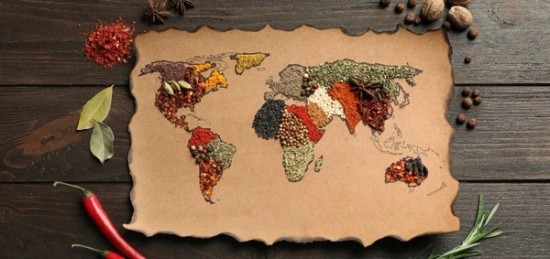By Valeri Lea
If you’ve ever attended a baseball game, the “Americana” of the peanut is obvious. Baseball and peanuts just go together. A PB&J sandwich is a classic brown bag American lunch and one of the top three ways consumers choose to enjoy their peanut butter (1). Peanut shells litter the floors of our favorite steakhouses as diners patiently (or impatiently) snack on peanuts while waiting for their order to arrive at the table. A more exploratory eater can even get peanut butter on their burger now. And peanut butter use as an ingredient in adult beverages is up 46% (1).
But peanuts did not originate in the U.S. They are not native to North America and play an even more significant role in global cuisines. While peanuts appear on 27% of foodservice menus overall, when you consider only ethnic restaurants, that number jumps to 31% (2). The top dishes include satays and kabobs, pad thai, curry, side sauces and egg rolls or spring rolls.
As chefs continue to innovate beyond those basic top dishes, global cuisines are the center point of their innovation and peanuts continue to play a role. Like Café Beatrice in Cambridge, Massachusetts, which took a classic breakfast cookie in a new direction by adding peanut butter, oats, cocoa and dried cherries to pepitas, sunflower and flax seeds(3). Peanut butter horchatas are also now appearing on menus (3).
This is because peanuts have been a familiar part of diets across the globe.
Mexico + South America
Peanuts originated in South America over 10,000 years ago and migrated northward to Mexico where they are ubiquitous in Mexican cuisine. Peanuts can be found in mole sauces, snacks, street food, appetizers, desserts and drinks. Restaurants serve roasted peanuts and potato chips as appetizers and fried peanuts are served with drinks at bars.
Peanuts are sold roasted and salted on the side of the street, and over 27,555 tons of Japanese-style peanuts (peanuts coated in a sweet, crunchy shell) are produced in Mexico every year. Mole, from the Nahuatl word molli or mulli which means sauce, is an important part of Mexican cuisine. Spanish settlers started adding peanuts to mole as a thickener and flavor enhancer.
“We’ve recently used peanut butter in a Peruvian aji amarillo mole sauce,” said Chef Patrick McDonnell, owner of MKA culinary firm in Kansas City, Missouri “We don’t add the peanut butter to cut the spice, as much as a way to keep the green, fresh, slightly acidic experience you can achieve in a pepper mash. Peanut butter smooths the heat, so there’s not a spike, but the heat is carried throughout the flavor making for a much better eating experience.”
Africa
Peanuts were carried to Africa by Portuguese explorers. They play an important nutritional role in many parts of Africa since they have good fats and contain seven grams of protein. Cooking with peanut oil is popular in Africa.
Additionally, peanuts appear in West African stews, soups and sauces, as well as a Nigerian dry peanut-based spice rub called Suya. According to Technomic’s Emerging Eats report, Suya is among the top 50 menu trends to watch in the U.S. in 2023. Additionally, prominent foodservice magazine Flavor & The Menu included skewered meats on their Top 10 Trends for 2023 list, stating meat on a stick is part of nearly every cultural cuisine and Suya plays a big role in that trend to watch.
Asia
Peanuts are used to add crunch to bao buns and as filings inside Chinese pastries. According to Foodservice Director magazine, noodles are eaten as a symbol of a long, healthy life on Lunar New Year. Peanuts are a frequent ingredient in Asian noodle salads.
Flavor & The Menu names Thai mashups as another one of their Top 10 Trends to watch in 2023 as chefs mix Thai flavors and ingredients with American, Mexican or Korean formats. Chef Sam Yoo, formerly with Momofuku, opened an Asiancentric concept in New York, called Golden Diner. His Thai Cobb salad mixes the classic American salad with Southeast Asian flavors. It includes Thai basil, mint, bean sprouts and spiced peanuts, with the usual lettuce, bacon and medium soft-boiled egg.
“Peanuts are just a natural fit in global cuisine cooking in the U.S.,” says Chef Patrick McDonell. “Thai, Korean, Chinese, Indian, Portuguese, Spanish, South American, Mexican — they all use peanuts as an essential ingredient in their dishes.”
As U.S. demographics continue to shift toward residents with multicultural backgrounds, American classics may be redefined. But the peanut’s role in global cuisines will ensure it continues to have a strong presence on menus and in home pantries.
Sources
(1) Bantam Group, 2021 Consumer Study
(2) Technomic, Inc., National Food Trends, Q4 2022
(3) Technomic, Inc., Novel Menu Trends, May 2022
